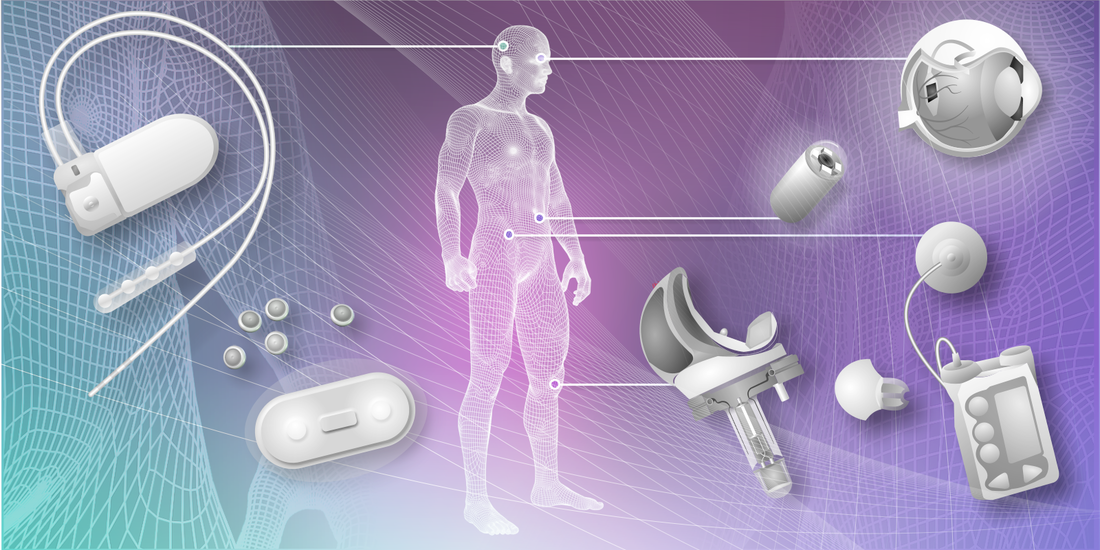What Are Medical Implants?Medical implants are man-made devices that can replace a missing or damaged biological structure or augment a natural one. They are also known as transplants. These biomedical devices are made of a variety of materials and are a great way to treat many different conditions. Read on to learn more about these devices on patient portal.aegislabs.
Biomaterials Surface properties are essential to the biocompatibility of biomedical implants. In order to increase biocompatibility, biomaterials are modified on the surface, typically through morphological or biochemical changes. This is done to minimize the risk of foreign body response, reduce bacterial adhesion, and enhance tissue and implant integration. The development of biomaterials for medical implants has progressed at a rapid pace in recent decades. They are now used in surgical procedures for replacing failed tissues with artificial ones. By 2030, the demand for hip and knee replacement operations is predicted to increase by 673 percent. This growth is made possible due to the properties of biomaterials. These include their superior mechanical and thermal conductivity. In addition, their biocompatibility is one of the main criteria for their recognition as biomaterials. Biomaterials are flexible and adaptable materials that work in close contact with living tissue. These materials can be derived from either synthetic or natural sources. There are also hybrid biomaterials that combine natural and synthetic sources. These materials have diverse biological, mechanical, and chemical properties that make them highly useful in biomedical implants. Polyurethane foam Polyurethane foams are used in numerous applications in the medical field. They are used in hospital bedding, catheters, and general-purpose tubing. They are also used to manufacture injection moulded devices and in wound dressings. They are biocompatible and biodegradable. Foam implants must meet certain requirements. They should have a low coefficient of friction, a high modulus of compression, and high tensile strength. They should also be biocompatible and have a high tear strength. Their molecular weights should be at least 100 kg/mol and preferably more than 120 kg/mol. For example, a biocompatible implant should retain its mechanical properties for at least 3 months after surgery. This requires that the implant be able to withstand hydrolysis within the body. Because polyurethane degrades in the body, the molecular weight of the implant is decreased. It is essential to ensure that the tear strength of a polyurethane implant is higher than three N/mm. Electrical components Electrical components are a critical part of a medical implant, ensuring the proper operation of the implant and enabling a better patient experience. Electrical components have become a common feature in many medical devices, ranging from cochlear implants to implanted defibrillators to a responsive neurostimulator for epilepsy, which monitors brain activity around the clock. As medical technology moves away from the conventional hospital setting, the need for reliable, high-tech electronic components becomes more important than ever. Miniaturized, wearable and implantable devices have increased the number of medical devices that require electronic components. For example, cochlear implants provide a sense of sound to deaf patients and are made of extremely small components, requiring compact, high-reliability capacitors. As medical devices incorporate more technology, their design must meet strict regulatory guidelines. These new guidelines are more stringent than ever, placing greater weight on reliability grade and size for life-sustaining applications. The electrical components in medical implants play an important role in monitoring and diagnosing various diseases. With high-resolution biosensors and efficient circuit designs, biomedical implants are becoming more sophisticated than ever. Growing geriatric population The increasing geriatric population and the burden of chronic diseases are driving the medical implant market. Moreover, technological advancements in this field are also fostering the growth of this market. Furthermore, the growing demand for cosmetic dentistry is also fueling the market for medical implants. In addition, an increasing number of patients with damaged limbs and organs is driving the demand for these implants. One promising method for increasing the success of medical implants in older patients is to create multidisciplinary teams. Multidisciplinary teams integrate all care providers to improve the quality of care. They include attending clinicians, geriatricians, physical/occupational/speech therapists, and discharge staff. In addition, they conduct daily goal-of-care rounds to ensure quality patient care. In addition, multidisciplinary teams are associated with lower length of stay and a reduced risk of complications.
0 Comments
Leave a Reply. |
Details
AuthorWrite something about yourself. No need to be fancy, just an overview. ArchivesCategories |

 RSS Feed
RSS Feed
